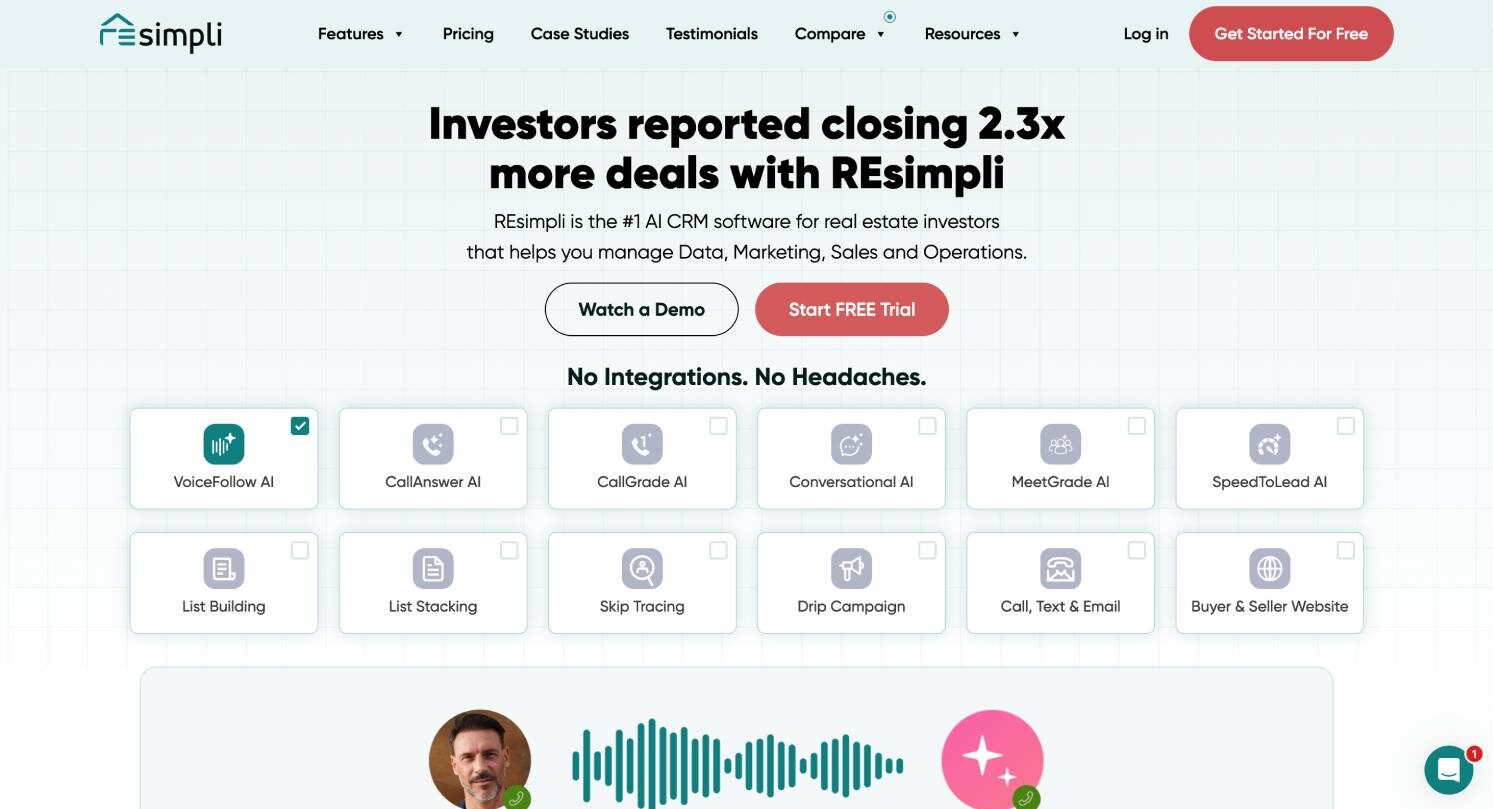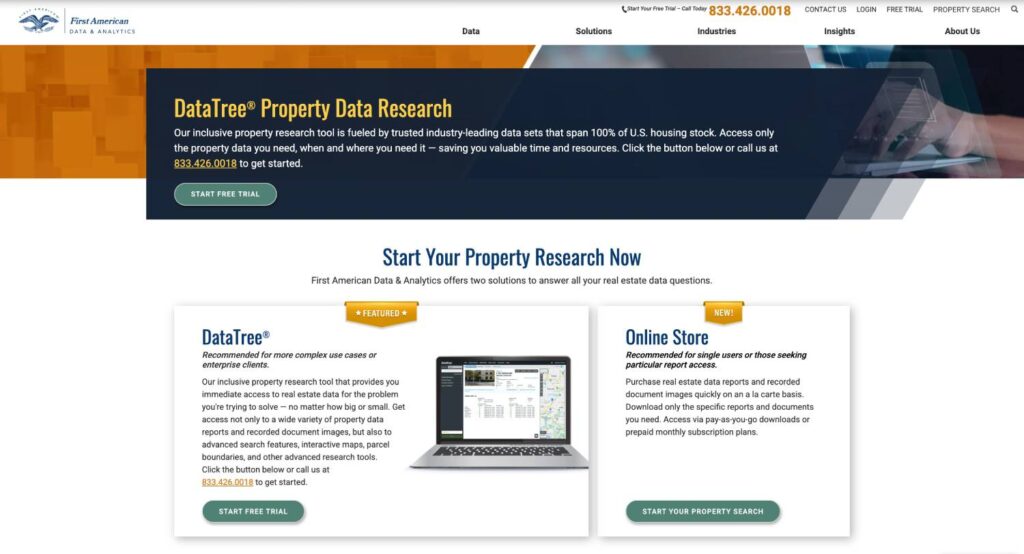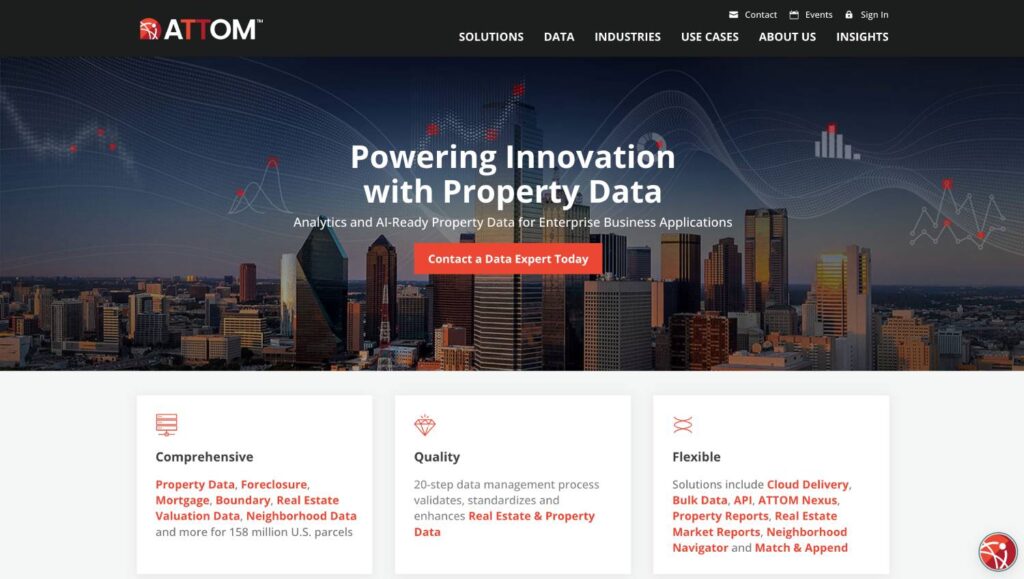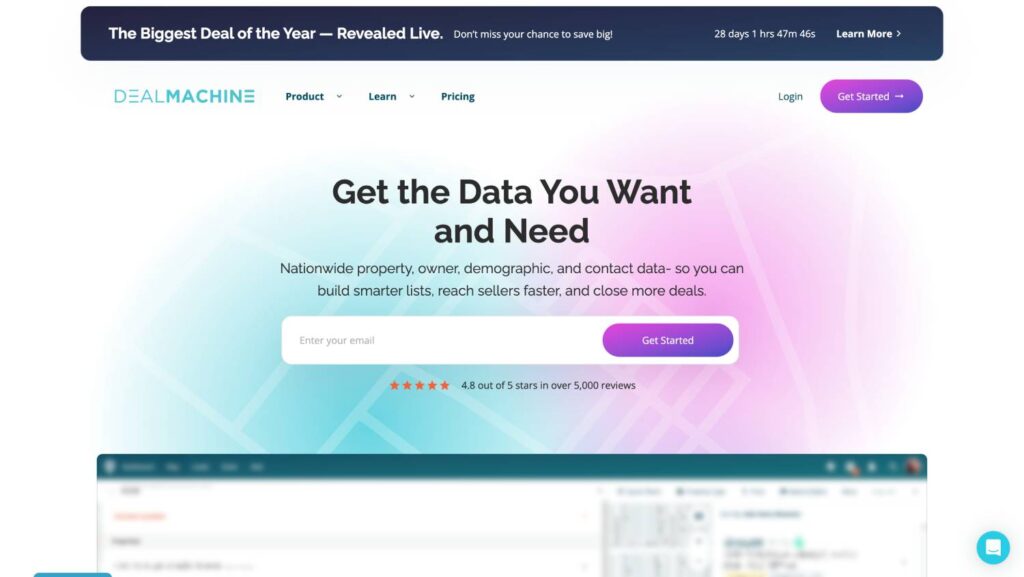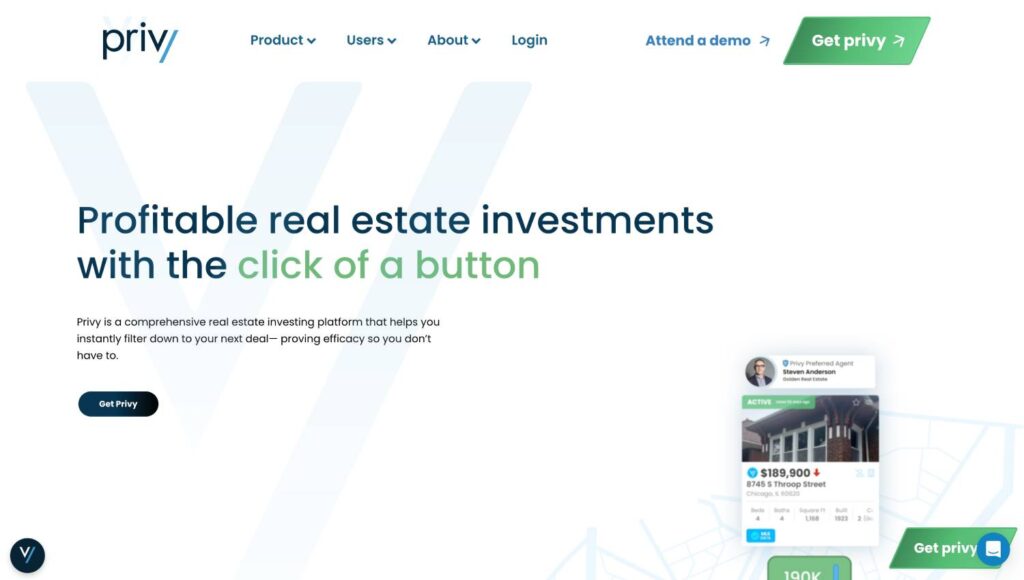Slow markets punish random outreach. Systems keep pipelines full.
When deals get scarce, most investors double their hustle—more calls, more lists, more hours. But hustle alone doesn’t refill a pipeline; process does. The investors who survive slow markets aren’t the ones working hardest; they’re the ones running tight, repeatable systems.
That’s what this guide is about.
Six proven systems you can run every week to keep your seller pipeline full, even when leads slow down. Each one maps directly to a measurable KPI (new leads, contact rate, appointment set rate, and deals closed), and all of them live inside one platform built for real estate investors: REsimpli.
From smarter list pulling and skip tracing to drip follow-ups and KPI dashboards, this isn’t theory; it’s an operating manual you can plug into your business today.
Let’s break down exactly how to turn process into profit.
tl;dr (Quick Summary)
- Slow markets don’t kill deals—inconsistent systems do.
- Build one new filtered seller list every week using absentee + equity + ownership filters.
- Stack and segment lists so motivated sellers (appearing on multiple lists) rise to the top.
- Respond within 30 seconds using Speed-to-Lead and CallAnswer AI.
- Follow up forever with multi-channel drip campaigns that run for months.
- Use Driving for Dollars as a structured lead source synced to your CRM.
- Skip trace inside your CRM to avoid bad data and improve contact rates.
- Run your pipeline like a business—daily task queues, weekly KPI reviews.
- Every process lives in one platform: REsimpli.
1) Build Targeted Seller Lists That Don’t Run Dry
Build one new, tightly filtered seller list every week. Then stack it against last week’s to surface the highest-intent owners.
Slow pipelines usually trace back to one root cause: stale lists. When you’re pulling the same broad zip codes month after month, you’re just re-dialing the same people. The fix is precision—filters that keep new, qualified sellers flowing in every week.
Start by defining your ideal off-market seller profile:
- Absentee owners with 40–70% equity who’ve held the property for 7+ years.
- Single-family homes in mid-priced neighborhoods (avoid outliers).
- Ownership type: individual or trust—LLCs often need separate skip tracing.
Each combination forms a “micro-list” that can last months. The goal isn’t quantity, it’s consistency: one fresh, laser-filtered list per week.
How to Do This in REsimpli
Inside List Builder with absentee, equity, and ownership length filters, you can:
- Pull nationwide property data filtered by absentee status, equity %, property type, and ownership length.
- Save your query as a Smart List. For example, “Absentee-60%+-SFR-7yr+.”
- Every Monday, clone last week’s Smart List and tweak filters (new ZIPs, higher equity band) to keep data fresh.
You’ll never run out of prospects because your lists regenerate dynamically without any CSV uploads or third-party logins.
Mini-Playbook: Do This in 10 Minutes
- Open List Builder → Choose Absentee = Yes, Equity = 40–70%, Ownership Length = 7+ years.
- Save it as “A-List-Week1.”
- Next week, duplicate → pull two new ZIPs → save as “A-List-Week2.”
Then, stack both lists (we’ll cover that next) to find owners who appear in both. Those are your Tier-A opportunities.
Example: Math of Consistency
200 new records per week × 30% valid contact × 10% conversation × 5% appointment × 20% close = 0.6 deals/week (all from a single, consistent list cycle)
KPI to Track:
- New leads added per week
- Cost per contact
2) Stack & Segment So the Most Motivated Float to the Top
Slow markets punish random outreach. Systems, like stacked and segmented lists, make sure your best leads rise to the top.
Pulling lists is easy. Prioritizing them is where deals are made. When a seller appears on multiple distress lists (say tax delinquent, vacant, and absentee) that overlap signals motivation. If you’re calling everyone equally, you’re wasting dials on the least likely to sell.
List stacking filters for intent, not just inventory. It lets you merge, dedupe, and rank owners so you focus on the 10% that matters most.
How to Do This in REsimpli
Inside REsimpli’s CRM, stacking isn’t a spreadsheet chore, it’s built in.
- Import or pull multiple lists (absentee, tax delinquent, pre-foreclosure, code violation, etc.).
- Use List Stacking to automatically dedupe at the owner or property level.
- Tag overlaps by frequency—3× list hit = Tier A, 2× = Tier B, 1× = Tier C.
- Send Tier A records straight into call queues or drips.
Within minutes, you’ve turned raw data into a ranked motivation matrix—ready for your acquisitions team to hit first.
Mini-Playbook: Do This in 10 Minutes
- Stack last week’s “Absentee Equity” list with a new “Tax Delinquent” pull.
- In REsimpli, filter by owners appearing on 2+ lists.
- Tag them “Tier A” and push to your daily calling queue.
Pro Tip: Your Tier A list will typically yield 2–3× higher contact rates and 5× appointment conversions than unfiltered lists. That’s because overlap = pain, and pain = motivation.
What to Measure
- Contact rate (calls connected ÷ attempts)
- Appointments set from Tier A
By stacking weekly lists and tagging overlaps, you’re building a compounding database that gets smarter every time you add data. When others are cold-dialing everyone, you’ll be calling only the ones most ready to talk.
3) Win the First Conversation With Near-Instant Speed-to-Lead
If a lead can’t reach you in 30 seconds, they’ll call someone else. Automate speed-to-lead so your phone rings first.
In a slow market, response time becomes your biggest competitive edge. The seller who fills out five web forms isn’t waiting around for follow-ups—they’re talking to whoever calls first. Investors who respond in under a minute can double their contact rates and triple their appointments compared to those taking even five minutes longer.
That’s why every seller form, voicemail, or chat submission should instantly trigger a call. Seconds matter.
How to Do This in REsimpli
Inside REsimpli, the Speed-to-Lead system automates that first touch:
- When a new lead comes in from your website, ad, or landing page, REsimpli auto-calls them instantly.
- The call routes directly to your acquisitions rep (or round-robins to whoever’s available).
- If nobody picks up, after hours or during lunch, CallAnswer AI steps in to answer, qualify, and book the appointment.
The result: no missed leads, no voicemail black holes, no lost deals.
Mini-Playbook: Do This in 10 Minutes
- Go to Speed-to-Lead settings → connect your web form or inbound number.
- Set routing rules for your team (first available, round robin, etc.).
- Turn on CallAnswer AI for after-hours coverage.
From that point, every new lead is auto-called in seconds—day or night.
Example: The Math of Speed
Let’s say you generate 50 inbound web leads/month.
- 40 answer when called within 60 seconds (80% connect rate).
- 20 answer after 5+ minutes (40% connect rate).
That’s double the conversations—just by automating response speed.
KPI to Track
- Median response time (target <60 seconds)
- First-call connection rate
When the market slows, the investors who respond fastest win. Speed-to-Lead gives you that advantage, and REsimpli builds it right into your CRM.
Start your free trial to set up instant lead routing and see how much faster your pipeline moves.
4) Follow Up Forever (Without Being Annoying)
Follow up forever. Most deals come after week four—set drips that run for months, not days.
A slow market doesn’t mean sellers aren’t motivated. It means they’re slower to act. The average off-market deal comes after 5–8 follow-ups, but most investors give up after two. That’s where automation wins—steady, polite persistence that keeps you top of mind without burning time or patience.
The goal isn’t to send more messages; it’s to stay relevant through context and cadence.
How to Do This in REsimpli
Inside REsimpli’s Automated drip follow-ups, you can design long-term, multi-channel sequences for every seller type.
Each sequence can include:
- SMS for quick check-ins (“Still considering selling?”)
- Email for updates or soft offers
- Ringless voicemails (RVMs) to sound personal without interrupting
- Direct mail postcards to re-engage cold leads
- Task reminders for manual calls when replies come in
Create different tracks. E.g., New Cold, Warm But Busy, and Not Now.
You can also trigger campaigns based on last activity, list source, or tag so no one slips through the cracks.
Mini-Playbook: Do This in 10 Minutes
- Build three drip tracks:
- New Cold: Day 0 call/SMS → Day 2 SMS → Day 7 email → Day 14 call → monthly postcard.
- Warm But Busy: Weekly SMS → biweekly call → monthly RVM.
- Not Now: Monthly SMS → quarterly call → annual postcard.
- New Cold: Day 0 call/SMS → Day 2 SMS → Day 7 email → Day 14 call → monthly postcard.
- Assign every lead a tag (A/B/C or list source).
- Let REsimpli handle the rest—your CRM will trigger messages, tasks, and even manual call reminders automatically.
Follow-Up Script (Example)
SMS Sequence Example:
- Day 0: “Hi [Name], saw your property at [Address]—still thinking of selling this month?”
- Day 2: “No rush at all, just checking in before we update our call list.”
- Day 7: “We just bought one nearby at [Street]. Want a quick chat to see what we could offer?”
Phone Opener:
“Hey [Name], just following up from last week—no pressure at all. We’re buying a few homes in [Area] this month and noticed yours might fit. Still open to a quick chat?”
Example: Math of Long-Tail Nurture
Let’s say 100 leads go into your drips.
- 40 reply within 30 days.
- 15 re-engage after 90 days.
- 5 close after 6+ months.
That’s 20% more deals you’d never touch again manually.
KPI to Track
- Reply rate
- Re-engaged leads/month
- Deals from long-tail nurture
One tool, one record, one timeline. Data → outreach → follow-up → deal should live in the same system. That’s why automated nurturing inside REsimpli matters—it keeps every conversation and every touchpoint connected to your seller pipeline.
5) Clean Data, Skip Trace Fast, and Make Contact
Bad data is pipeline cancer. Clean, skip trace, and verify before you burn dials.
You can’t close deals with numbers that don’t pick up. Inconsistent data like duplicate records, old owners, disconnected lines, etc. kills contact rates and wastes hours of calling. In slow markets, every dial costs time and money.
That’s why the best investors treat data hygiene and skip tracing as revenue activities, not admin work. The faster you can enrich, tag, and verify seller records, the faster you can turn lists into live conversations.
How to Do This in REsimpli
With REsimpli’s built-in skip tracing, data cleanup happens inside the CRM—no uploads, no extra vendors.
Here’s the 3-step flow:
- Select your stacked list or D4D tags inside REsimpli.
- Click Skip Trace—the platform instantly appends up to 10 phone numbers and 3 emails per record.
- Tag each record by result quality (e.g., Verified, Partial, or No Match).
You can launch calls, texts, or drips straight from those enriched records—turning fresh data into first contact in minutes.
Mini-Playbook: Do This in 10 Minutes
- Filter your Tier A list (owners on multiple lists or high motivation).
- Hit Skip Trace → review appended results → tag Verified.
- Add Verified contacts to your “Speed-to-Lead” or “Follow-Up Forever” sequences.
Within 15 minutes, you’ve taken raw CSVs and built a ready-to-dial list of motivated sellers—no third-party tools required.
Pro Tip: Always skip trace before your first dial, and verify results monthly. Bad data compounds quickly.
Example: even a 10% bump in valid contact rate from 40% to 50% can mean 20–30 extra conversations per thousand records.
KPI to Track
- Valid contact rate
- Attempts-to-conversation ratio
When your data, dialing, and follow-up all live in one system, your outreach becomes surgical. REsimpli’s skip tracing links data to action, helping you spend less time finding numbers and more time closing deals.
6) Run Your Pipeline Like a Business (Daily KPIs & Task Queues)
Every rep needs a daily queue; every business needs a weekly dashboard. That’s how pipelines survive slowdowns.
A full pipeline isn’t built on luck—it’s managed like an operation. Without measurable KPIs, your team ends up guessing which leads to call, which channels work, and why deals drop off. The smartest investors run their acquisition pipelines like sales organizations: every lead assigned, every call logged, every number tracked.
When markets slow, that discipline is what keeps deals flowing.
How to Do This in REsimpli
Inside REsimpli, the KPI dashboard and daily task queues give you complete visibility and control:
- The KPI Dashboard shows contact rates, appointment rates, cost-per-deal, and performance by rep or channel.
- Leaderboards and the daily productivity email highlight who’s hitting numbers and who needs coaching.
- You can set recurring task queues for each segment (Tier A/B/C) so every rep starts their day with a focused list of calls and follow-ups.
It’s not about micromanaging, it’s about creating consistency. You can’t improve what you can’t measure.
Mini-Playbook: Do This in 10 Minutes
- Create three queues: Tier A Follow-Up, New Leads (Speed-to-Lead), and Re-engagement.
- Assign each to your reps with daily call targets.
- End the week by reviewing the KPI Dashboard—adjust filters, refine lists, and spot bottlenecks.
Example: Weekly Pipeline Rhythm (Table)
| Day | Action | KPI to Track |
|---|---|---|
| Mon | Pull new lists → stack → tag Tier A → launch fresh drip | New leads added |
| Tue–Thu | Two 90-min call blocks on Tier A → SMS follow-ups for no-answers | Contact rate, Appt rate |
| Fri | Review KPIs → tighten filters → add D4D properties → extend drips | Deals/Month, ROI/Channel |
| Daily (Automation) | Speed-to-Lead ON, after-hours CallAnswer AI active | Median response time |
Pro Tip: Hold a 15-minute Monday pipeline stand-up. Review last week’s contact rate, appointments set, new leads added, and deals in the next 30 days. Then commit to changing one thing and testing one thing that week. Small optimizations compound fast.
KPI to Track
- Pipeline coverage (weeks)
- Deals/month
- ROI by channel
Running your seller pipeline like a business means operating from data, not instinct. With REsimpli, everything from list pulling to follow-up to KPI tracking happens in one place—no integrations, no spreadsheets, no guesswork.
Example Weekly Operating Rhythm (Copy-Paste System)
Slow markets reward investors who operate on rhythm, not emotion.
This simple weekly cadence keeps your seller pipeline consistent—no guessing, no downtime, no missed leads. Copy it, tweak it, and run it every week.
Weekly Pipeline Operating Rhythm
| Day | Action | Primary KPI |
| Monday | Pull new lists (2 ZIPs) → stack → tag Tier A → launch fresh drip | New leads added/week |
| Tuesday–Thursday | Two 90-minute call blocks on Tier A → SMS follow-ups for no-answers | Contact rate |
| Friday | Review KPIs → tighten filters → add D4D properties → extend long-tail drips | Appointments set / ROI by channel |
| Daily (automation) | Speed-to-Lead ON → After-hours CallAnswer AI ON | Median response time |
Why This Works
- List → Stack → Skip Trace → Drip → Call → Review forms a closed data loop.
- Your CRM stays clean, your team stays busy, and your KPIs tell you exactly what’s working.
- Consistency compounds—200 new records a week equals more conversations, more appointments, and steady deals month after month.
This rhythm ties every major REsimpli feature together:
- List Builder to source new leads weekly.
- List Stacking to find overlaps.
- Built-in Skip Tracing to clean and enrich data.
- Drip Campaigns to automate nurture.
- Speed-to-Lead and CallAnswer AI to handle inbound instantly.
- KPI Dashboard to measure everything.
One tool, one record, one system. That’s how top investors keep their seller pipelines full (even in a slow market).
Conclusion: One System. One Source. One Full Pipeline.
Slow markets don’t kill businesses—inconsistent systems do.
The investors who keep their pipelines full aren’t making 10× more calls or buying 10× more data. They’re just following one repeatable rhythm across every stage:
List → Stack → Skip Trace → Drip → Call → Measure → Repeat.
Every one of those steps lives inside REsimpli—the real estate CRM built for multi-state seller pipelines.
From list pulling and skip tracing to drip campaigns, driving for dollars, and KPI dashboards, it’s one connected loop designed to make sure no lead slips away.
When the next slowdown hits, you won’t be reacting—you’ll be operating.
Because your system already runs like a business.👉 Start your free trial (30 days on annual / 14 days on monthly) and build a pipeline that never runs dry.




